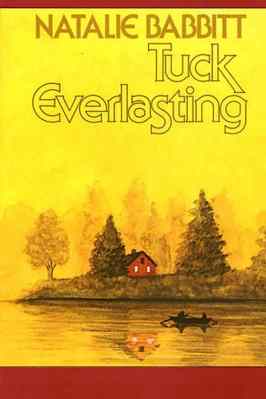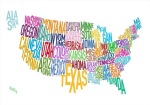
In mindfulness practice, we are guided to return to our “center” when our mind wanders. That center can be the breath, or a sound to focus on, but something that will draw the mind back to the practice, to the focus of the moment. Reading children’s books does something similar for me. It centers me, and reminds me of my deep love of reading…and reminds me of who I am deep inside.
Revisiting the beautiful story, Tuck Everlasting, by Natalie Babbitt, was a gift I gave myself at the beginning of this August. This last year has been such a profound one for me, full of losses, and, in all honesty, at times I have felt that I’ve lost myself. Reading brings me back to my center. And this story especially, about life and death and the idea of living forever, was a reminder of just how precious life is…and that “Life’s got to be lived, no matter how long or short,” she said calmly. “You got to take what comes. We just go along, like everybody else, one day at a time.”
From the Publisher:
Doomed to – or blessed with – eternal life after drinking from a magic spring, the Tuck family wanders about trying to live as inconspicuously and comfortably as they can. When ten-year-old Winnie Foster stumbles on their secret, the Tucks take her home and explain why living forever at one age is less a blessing that it might seem. Complications arise when Winnie is followed by a stranger who wants to market the spring water for a fortune.
Favorite Quotes:
“Everything’s a wheel, turning and turning, never stopping. The frogs is part of it, and the bugs, and the fish, and the wood thrush, too. And people. But never the same ones. Always coming in new, always growing and changing, and always moving on. That’s the way it’s supposed to be. That’s the way it is.”
“Don’t be afraid of death; be afraid of an unlived life. You don’t have to live forever, you just have to live.”
“I don’t want to die.”
“No,” said Tuck calmly. “Not now. Your time’s not now. But dying’s part of the wheel, right there next to being born. You can’t pick the pieces you like and leave the rest. Being part of the whole thing, that’s the blessing. But it’s passing us by us Tucks. Living’s heavy work, but off to one side, the way we are, it’s ‘useless, too. It doesn’t make sense. If I knowed how to climb back on the wheel, I’d do it in a minute. You can’t have living without dying. So you can’t call it living, what we got. We just are, we just be, like rocks beside the road.”
I loved rereading this book at this stage of my life. Through the lens of age and grief, I deeply appreciated the honesty given the ideas, and the beauty of the language expressing them. It truly is a timeless classic, and a timeless gift from the author, Natalie Babbitt,














 Recently, I read two books for young people about having to flee their homes and homelands because of war.
Recently, I read two books for young people about having to flee their homes and homelands because of war.  The other book I read on the struggle of refugees was Katherine Applegate’s young adult book called
The other book I read on the struggle of refugees was Katherine Applegate’s young adult book called 



 In January, I also read the Newbery Award winning book of 1941,
In January, I also read the Newbery Award winning book of 1941, 








